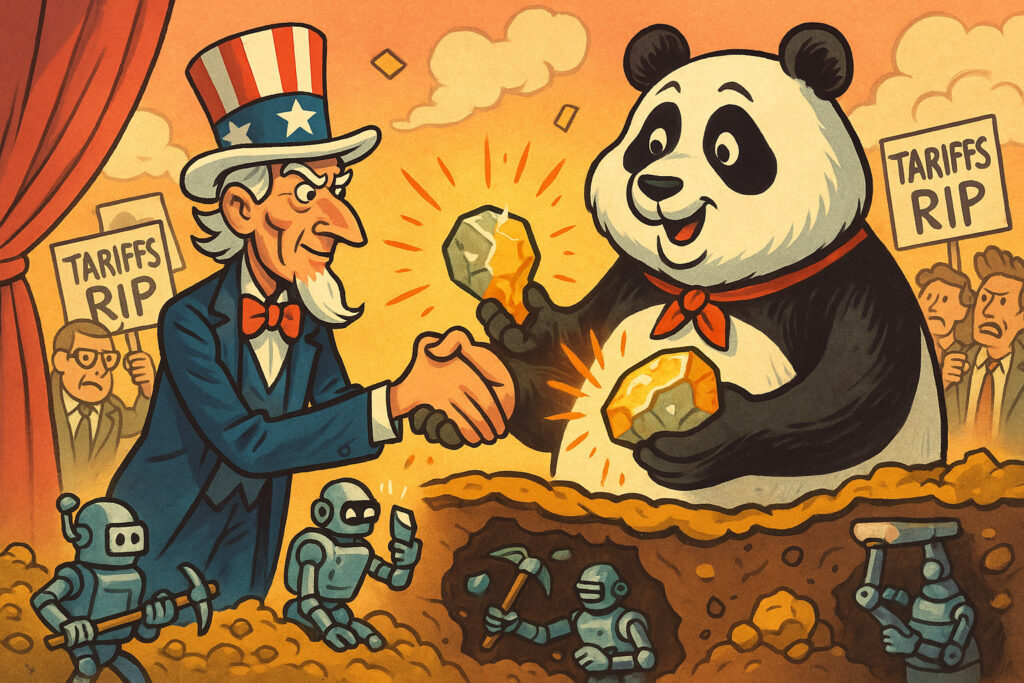Introduction
In a significant geopolitical and economic development, the United States and China on June 10, 2025, announced a new trade agreement focused on rare-earth elements. The pact includes mutual tariff reductions and guarantees of supply stability, marking a rare instance of cooperation amid broader strategic rivalry.
Body
Markets welcomed the deal, which aims to reduce supply chain vulnerabilities in critical technologies. Rare-earth elements are essential for high-tech manufacturing, including semiconductors, electric vehicles, and defense systems. China controls over 60% of global rare-earths output, making any supply disruption a key risk to Western economies.
The agreement includes:
- A 25% reduction in tariffs on rare-earth exports and imports over the next year.
- A bilateral monitoring mechanism to ensure transparent reporting and dispute resolution.
- U.S. investment support for domestic rare-earth refining, backed by Chinese commitments to stable exports.
Equity markets reacted positively. The S&P 500 rose 0.5% to 5,401, while the Nasdaq gained 0.8% to 18,678. Shares of rare-earth producers such as MP Materials (MP) jumped 12%, and China Northern Rare Earth surged 8% on the Shanghai Exchange.
Commodity prices responded swiftly. Neodymium and praseodymium spot prices fell by 6% and 5%, respectively, on expectations of improved supply. Copper also edged down 1.4% to $4.42/lb, as easing trade tensions suggest less supply chain hoarding.
The U.S. Dollar Index remained stable at 104.20. The Chinese yuan appreciated to 7.12 per dollar, bolstered by improved trade outlook. In contrast, safe-haven currencies like the yen weakened slightly.
Bond yields inched higher. The 10-year Treasury yield rose to 4.04%, as risk sentiment improved and demand for duration waned.
Analysts described the agreement as a “positive step” for global trade stability. While unlikely to reverse strategic decoupling, the pact signals a functional avenue for resolving sector-specific issues.
Still, risks remain. The agreement’s success depends on follow-through, especially regarding enforcement and transparency. Furthermore, political resistance within both nations could derail long-term cooperation.
Conclusion
The U.S.–China rare-earths trade pact marks a notable thaw in economic relations, offering both nations mutual benefit in a strategically vital sector. Financial markets responded with optimism, particularly in equities and industrial commodities. While broader tensions remain, this targeted agreement could serve as a blueprint for pragmatic engagement in other critical areas. Investors should watch for implementation details and monitor whether this cooperation extends to sectors like AI hardware and EV supply chains.
